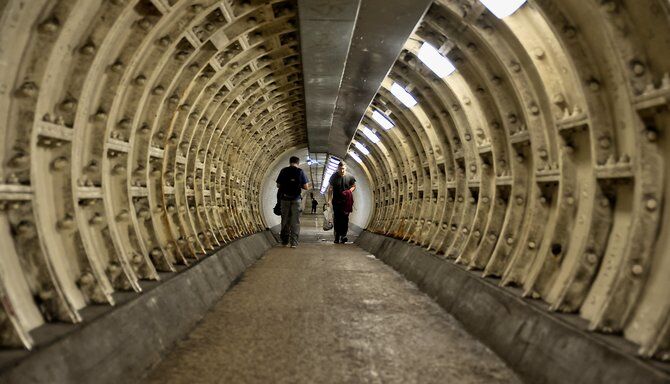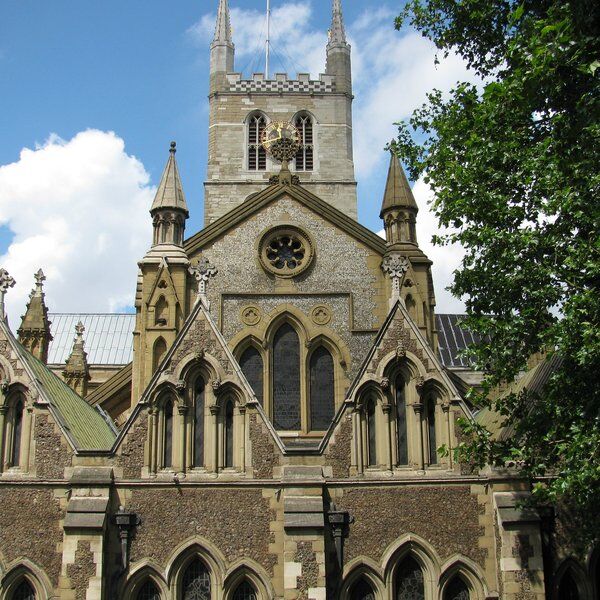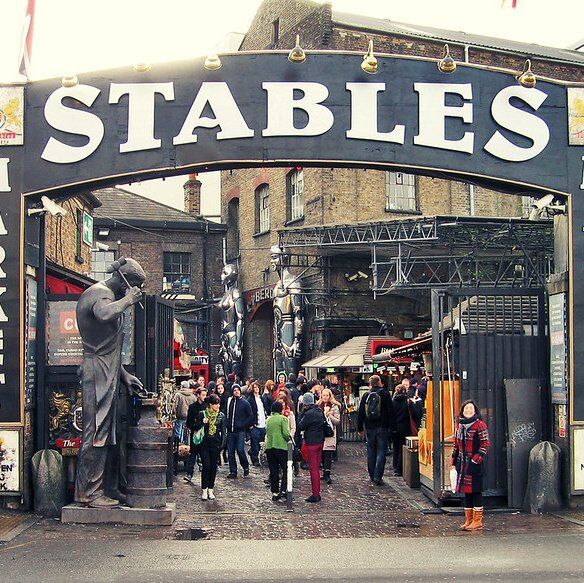Exploring the Greenwich Foot Tunnel in London
Beneath London’s River Thames, lies a hidden gem of engineering and history – the Greenwich Foot Tunnel. Measuring 1,217 feet in length and descending to depths of about 50 feet, this subterranean passageway provides pedestrians with a unique route between Greenwich on the south bank and Isle of Dogs on the north. This opens up access to notable landmarks such as the Old Royal Naval College and Greenwich Park.
Accessible through glazed dome structures, the tunnel underwent extensive renovation from 2009 to 2014, culminating in the installation of new lifts and enhanced drainage systems.
Originally conceived to streamline the commute for workers from south London to the Isle of Dogs docks, it now facilitates 24-hour access for travellers crossing the River Thames.
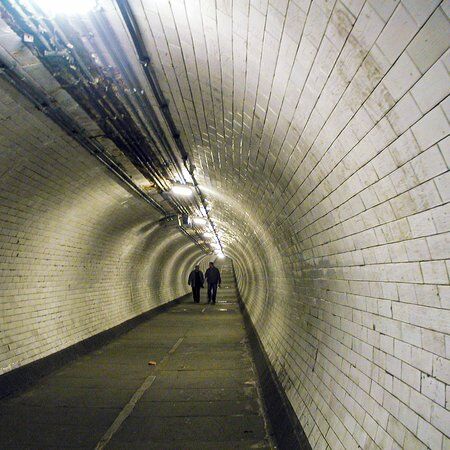
The History of the Greenwich Foot Tunnel
The Greenwich Foot Tunnel, alongside its counterpart, the Woolwich Foot Tunnel, originated in the early 20th century, with constructions completed in 1902 and 1912. Initiated by the former London County Council, the tunnel’s creation aimed to facilitate safe, year-round passage for dock and shipyard workers. Labour politician Will Crooks championed this move highlighting concerns about the risks of using the costly and unreliable ferry services during bad weather.
During World War II, the tunnel's northern end bore the brunt of London bombings, resulting in substantial damage that necessitated reinforcement with inner linings made from concrete and thick steel. Today, visitors are urged to keep an eye out for remnants of WWII bomb damage at its northern exit.
Designing the Greenwich Foot Tunnel
Sir Alexander Binnie, a renowned civil engineer, spearheaded the design and construction of the Greenwich Foot Tunnel, which commenced in 1899 and was opened in 1902. Tasked with providing a new route across the Thames, the tunnel's creation marked a significant Victorian engineering triumph.
Construction was accomplished through manual excavation by a modest construction team of 15 individuals. It had an estimated cost of £127,000 (equivalent to £15 million today) but some of this included compensation for displaced London watermen.
At each end of the tunnel, entrance shafts crowned with elegant glazed domes welcome visitors down into the depths. Initially equipped with lifts in 1904, the tunnel's accessibility received upgrades in 1992 and 2012. Spiral staircases provide additional access to the passageway.
Adorned with over 200,000 white glazed tiles, decorative motifs, and ornate lamp posts Greenwich Foot Tunnel is elegant and charming.
Preserving Greenwich Foot Tunnel
Over the years, the Greenwich Foot Tunnel has undergone several refurbishments and upgrades to ensure its continued safety and accessibility. Initiated by Greenwich Council, extensive upgrade works began in April 2010.
Prior to the renovations, the lift service operated limited hours and faced frequent closures due to staff shortages and technical issues. Consequently, alternative transportation routes were necessary.
The upgrade project aimed to reduce leakage, improve drainage, and modernise facilities such as lifts, CCTV systems, and signage. Originally scheduled for completion by March 2011, the project faced delays, with the tunnel closing completely in February 2011. While stair access was restored relatively quickly, lift services remained unavailable until 2012.
Despite initial setbacks, Greenwich Council eventually completed the upgrade work, introducing customer-operated lifts equipped with surface-level availability signs, enhanced CCTV coverage, and improved lighting. However, the upgrade process faced further challenges in 2021-22, with prolonged periods of lift closures attributed to international supply chain issues affecting the availability of spare parts.
Despite these setbacks, the Greenwich Foot Tunnel remains a vital pedestrian link in London and has retained much of its original charm and character.
Using Greenwich Foot Tunnel Today
With an estimated 4,000 crossings daily and accommodating 1.5 million commuters annually, the tunnel has earned notoriety beyond its intended function, with tales of ghostly apparitions and paranormal activity adding to its mystique.
Although primarily designated for pedestrians, the Greenwich council has initiated a trial for shared cycling and pedestrian use during off-peak hours. The tunnel, with its glass-topped domes housing lifts and stairways, presents a picturesque 370-metre-long journey beneath the river's surface.
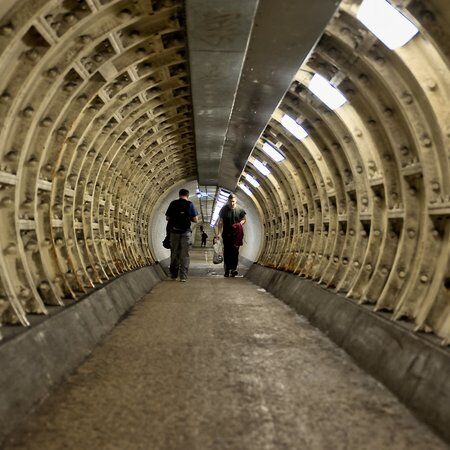
Explore London with CityDays
The best way to discover more hidden gems around London is to take your time and, ideally, have a pre-planned route that takes you past all the noteworthy nooks and hidden gems.
We can help you there!
The City combines the fun of an outdoor treasure hunt with the historic facts and whimsical trivia of a walking tour.
Answer riddles, solve puzzles and learn more about London’s 2000-year-old history in a new and interactive way - plus you get 20% off food and drink at a historic pub chosen by us!
Take the stress out of planning your visit to London and book your adventure today!
Not visiting London this time? Don’t worry, you’ll find us all over the world.
